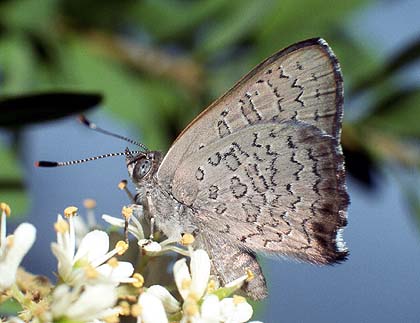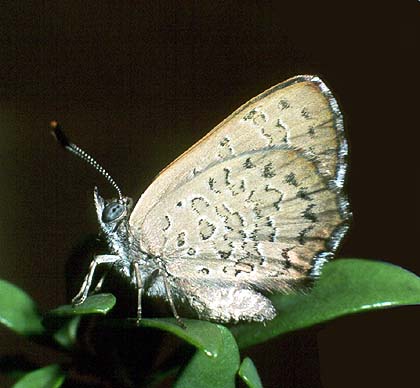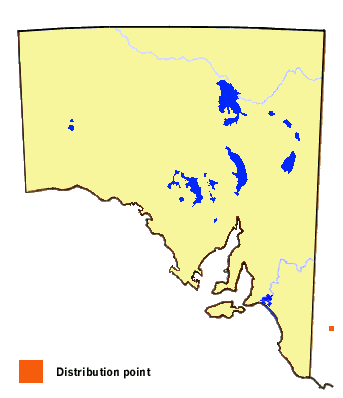Dull Copper
Paralucia pyrodiscus (Rosenstock)


Interesting Aspects
These small butterflies occur near their foodplants where they are usually seen sunning themselves with opened wings. The common name is appropriate as the butterflies are not very obvious even with wings opened, due to the small areas of orange on the uppersides of the opened wings. They are very similar to their close relative Paralucia aurifera with which they sometimes fly. Both sexes of P. pyrodiscus can be differentiated from P. aurifera in that they lack a series of blue-white subterminal spots at the edge of the hindwing upperside. Female P. pyrodiscus also lack a large orange area on the forewing underside. Males of both species have stubby hindwing tornal tails, which differentiates them from other Australian coppers.
P. pyrodiscus has a rapid flight but of short duration, sometimes reminiscent of skippers. An elusive butterfly, it occurs in well-defined small colonies that can exist for many years if left undisturbed. Males will establish territories in sunny areas within or near the breeding grounds by perching on the hostplants or other low bushes. Females are seen on or close to their hostplants. When settled, the butterflies are easily approached and can sometimes be touched by hand. If startled they fly only a short distance before settling again.
The butterfly has yet to be recorded in South Australia, but a relict population is known to occur in western Victoria near Kiata, 75 km from the SA-Vic border, and so it is possible this butterfly may eventually be found in SA Butterflies from this area are sometimes known as subspecies lucida Crosby.


